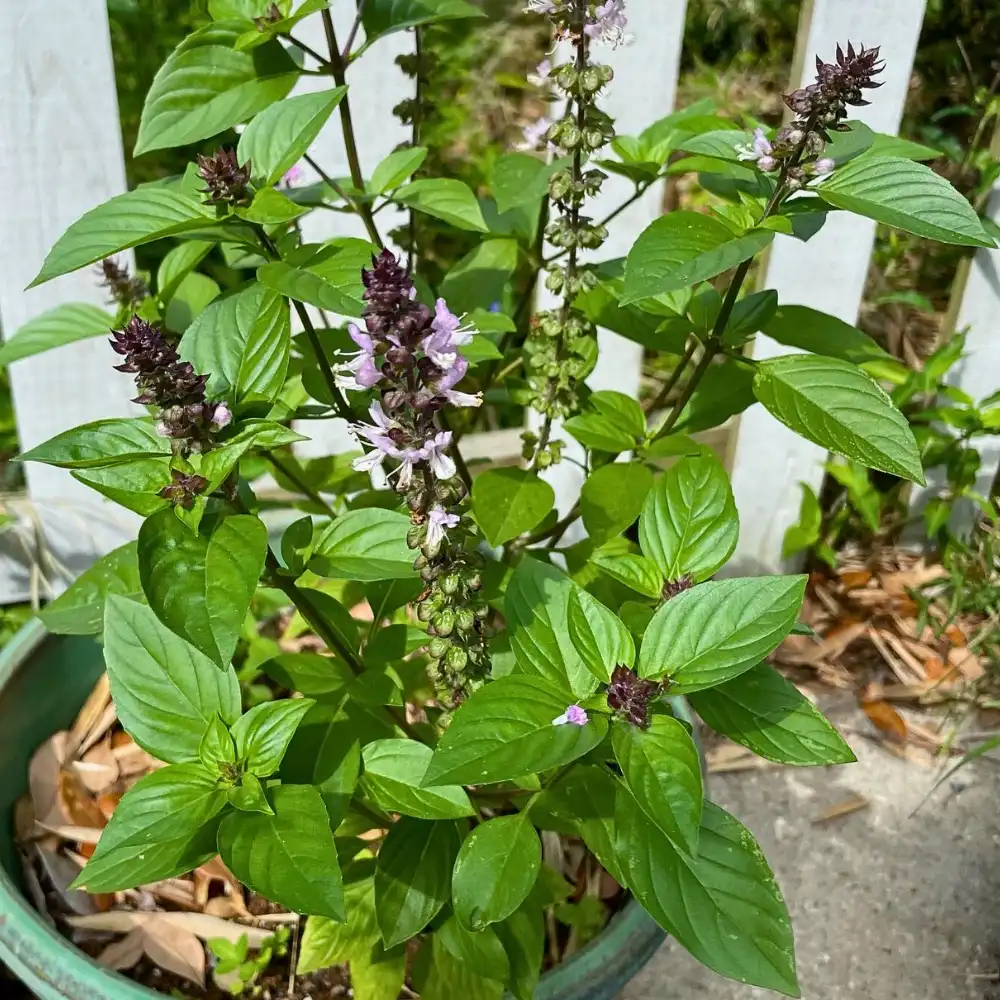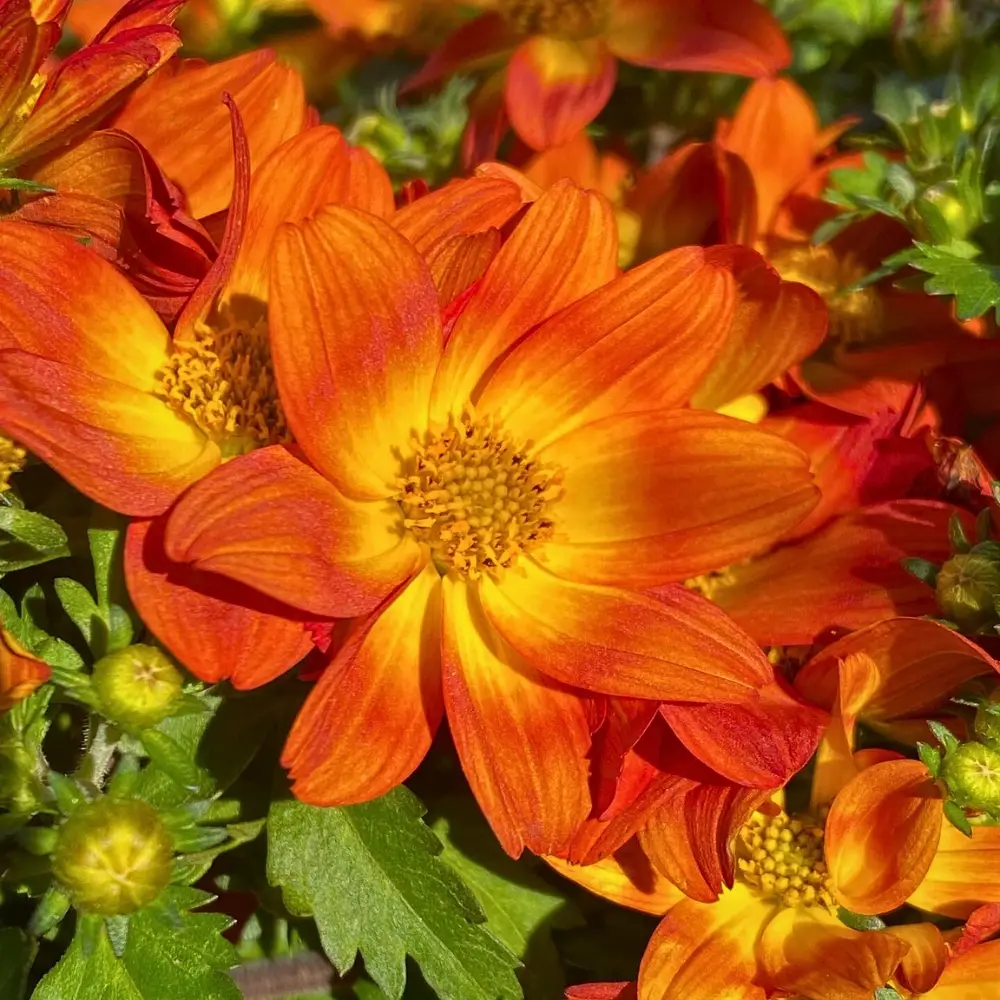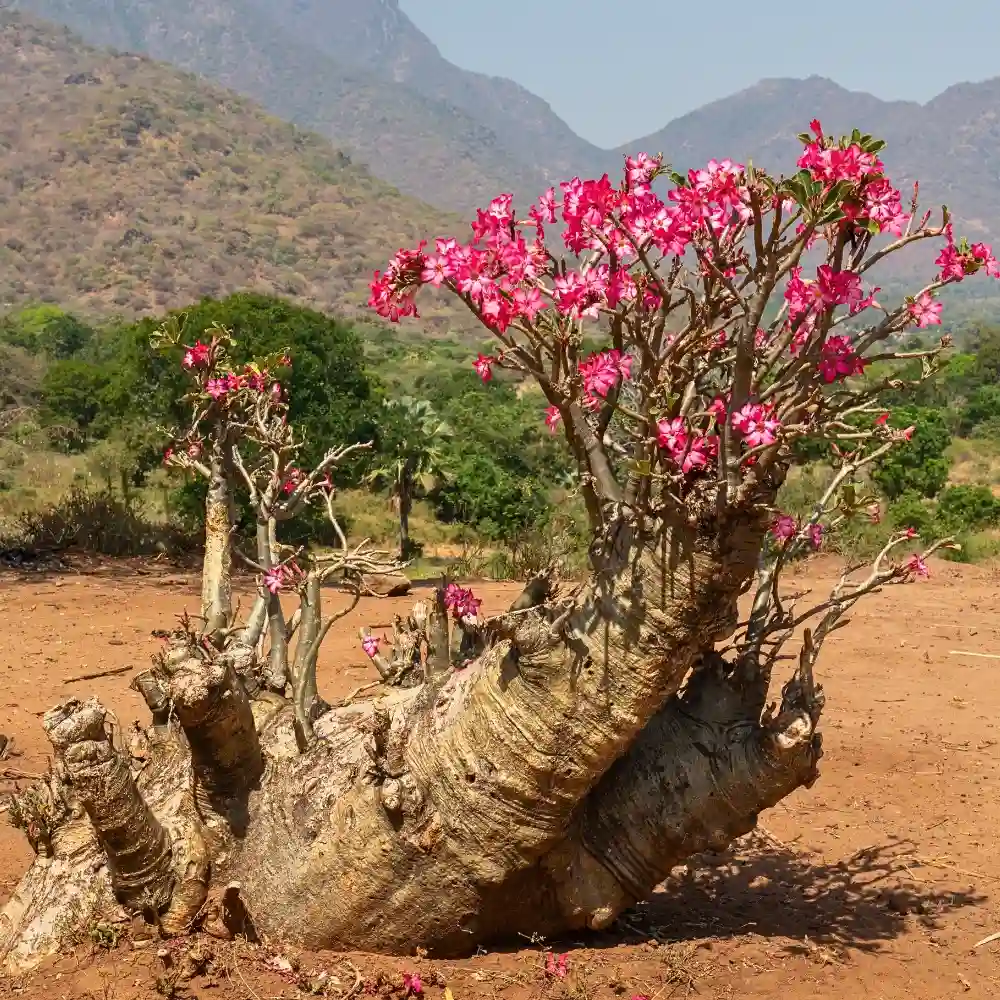Across the world, climate change continues to pose a challenge. Water for plants is, in many places, becoming a pressing concern. Should you, therefore, go slow on gardening or landscaping, as a result? Not quite. The need for sustainable and eco-friendly gardening and landscaping practices is also becoming more apparent. And with that xeriscaping, a landscaping approach emphasizing water conservation and sustainability offers an ideal option for environmentally-conscious homeowners. Often, xeriscape landscapes need little — or no — water beyond what the natural climate provides.
A term derived from the Greek word ‘xeros’ - meaning dry - this innovative approach to landscaping champions the use of drought-tolerant plants and water-wise practices to create stunning landscapes that thrive in arid climates. Xeriscaping is not about sacrificing aesthetics for sustainability but embracing floral beauty alongside resilience. It is about creating landscapes that are not only visually appealing but also environmentally responsible, minimizing water usage and promoting biodiversity. It has, largely, been embraced in dry regions
The Concept of Xeriscaping
This landscaping concept originated in Denver, Colorado in the 1970s. It is an idea that came up when the Denver Water Department began promoting water-efficient landscaping practices in response to a severe drought.
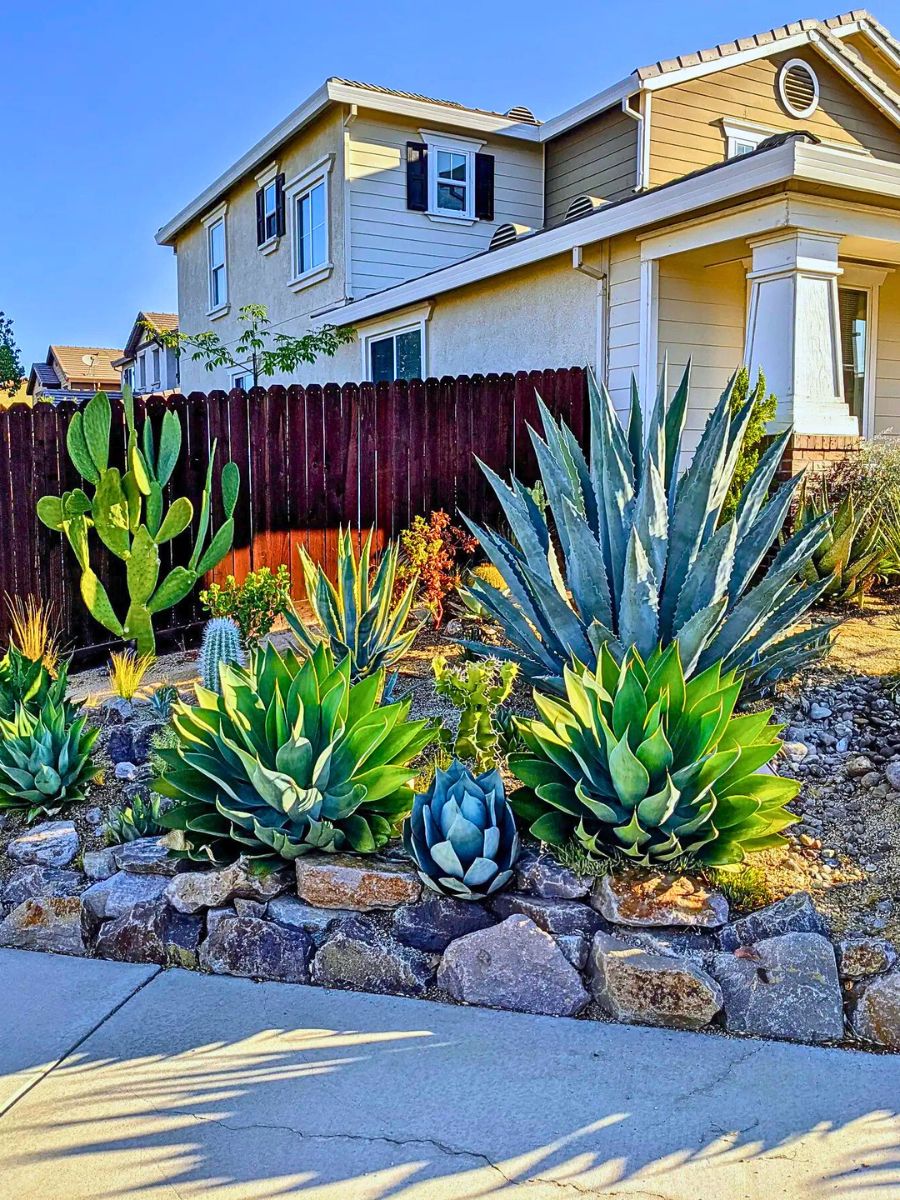
Photo by @mr_agave
This approach to landscaping is designed to minimize water usage while still creating a visually appealing outdoor space. Xeriscaping is not just about using drought-tolerant plants; it's a comprehensive approach that incorporates efficient irrigation systems, soil improvement, and mulching to create a water-conserving ecosystem.
It, essentially, presents a rewarding and environmentally friendly way to connect with nature and enhance your home's value, using the most minimal water resources.
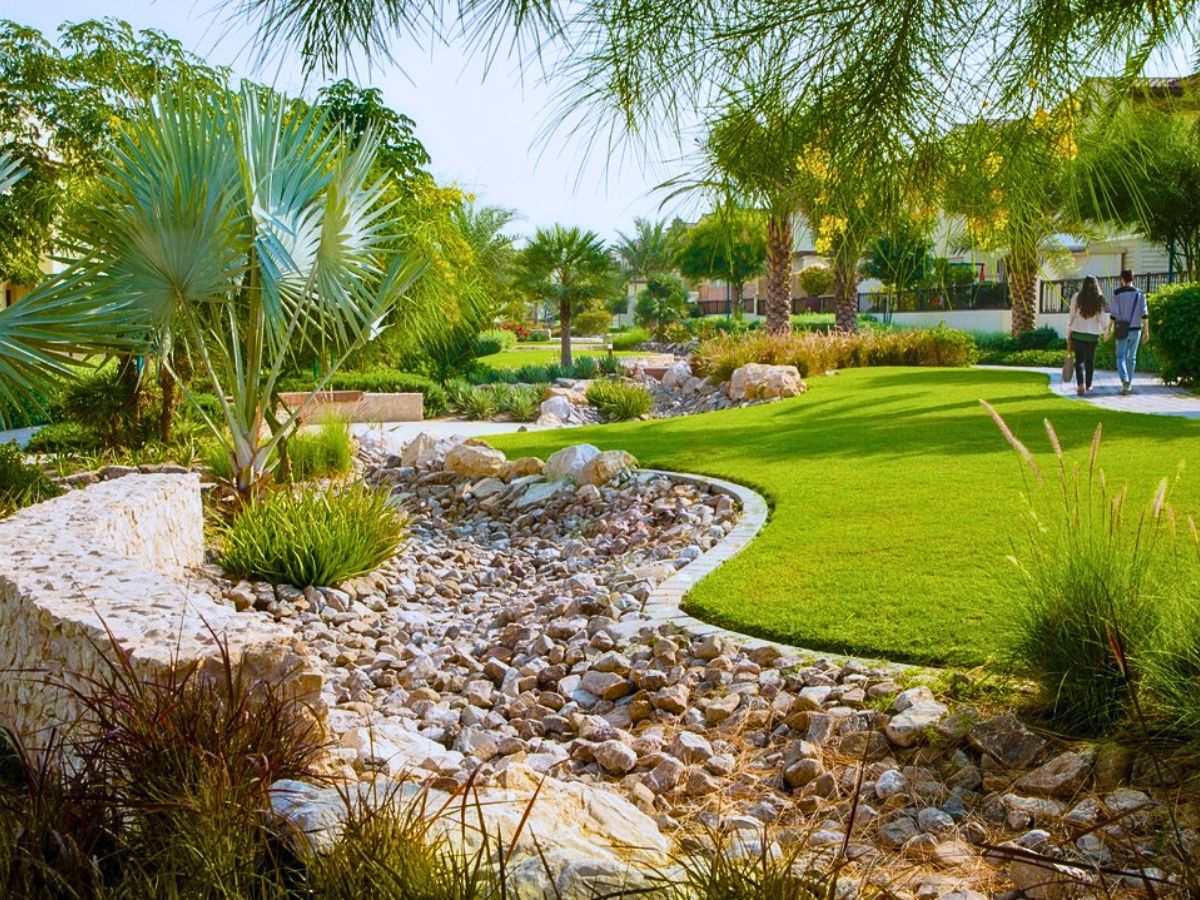
The Seven Principles of Xeriscaping
Xeriscaping isn't just about planting cacti and succulents. It's a holistic approach encompassing seven core principles.
- The foundation of xeriscaping lies in thoughtful planning and designing. Analyze your site's microclimate, soil type, and sunlight exposure to select plants that will thrive in your specific conditions.
- Healthy soil is crucial for water retention and plant growth. Thus, amend your soil with organic matter like compost to improve its structure and water-holding capacity.
- Invest in a smart irrigation system that delivers water precisely where and when it's needed. Consider drip irrigation or soaker hoses for targeted water delivery, minimizing evaporation and runoff.
- A layer of mulch, like shredded bark or wood chips, helps retain moisture, suppress weeds, and regulate soil temperature.
- Appropriate plant selection is the heart of xeriscaping. Choose plants that are naturally adapted to your climate and require minimal watering. Opt for native species whenever possible, as they are already acclimated to your local conditions.
- Proper plant placement is also key. Group plants with similar water needs together to optimize irrigation and minimize water waste.
- Regular maintenance is important to keeping your xeriscape landscape thriving. Prune plants regularly to maintain their shape and health, and remove weeds promptly to prevent competition for water and nutrients.
Transforming Your Home’s Landscaping With Xeriscaping
Xeriscaping can be applied to any size property, from small urban gardens to sprawling suburban lawns. Here's how you can incorporate it into your own home.
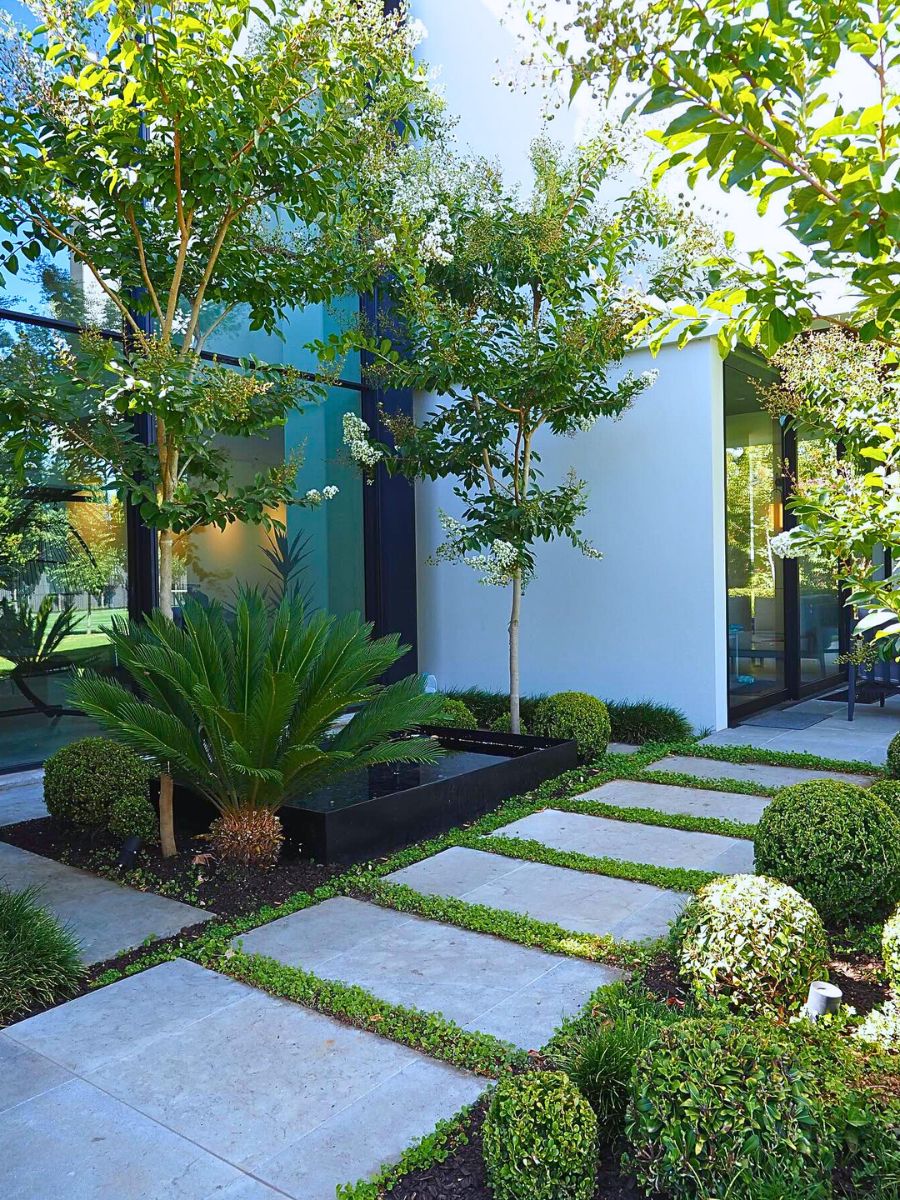
The Front Yard
To incorporate xeriscaping into a front yard, start by assessing your climate and soil conditions to select appropriate plants. Native succulents, grasses, and flowering perennials that thrive with minimal watering are ideal.
At the entryway, create a welcoming entrance with drought-tolerant shrubs like lavender, rosemary, or salvia, while in the flower beds and lawn, you can replace thirsty plants with a mix of drought-tolerant flowers like California poppies, yarrows, or zinnias. Also, replace water-thirsty turf grass with drought-resistant groundcovers or ornamental gravel.
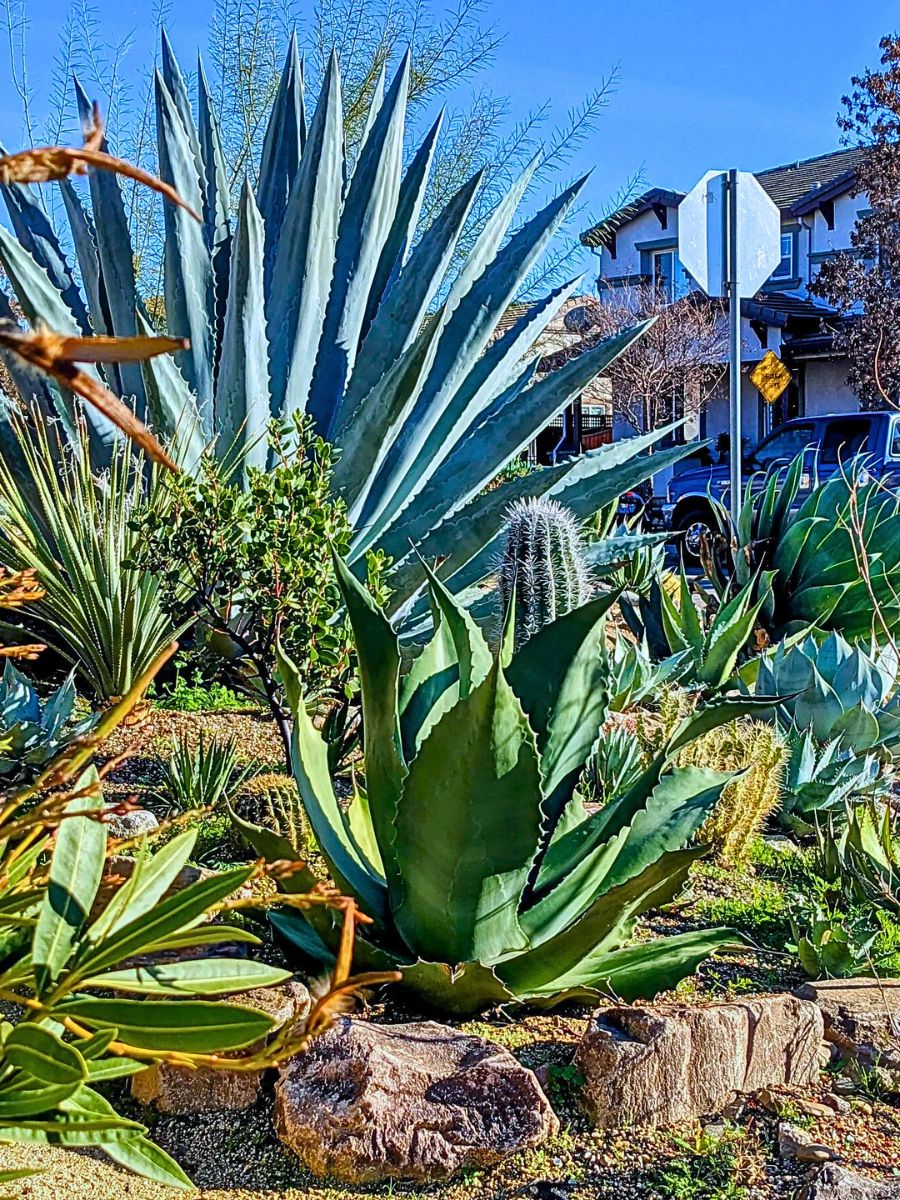
In addition, use mulch around the plants and flowers to retain soil moisture. Group the plants with similar watering needs together and include hardscaping elements like pathways, boulders, and dry stream beds to add visual interest.
Strategically place the plants to provide year-round color and texture, and consider incorporating native trees for shade. Also, avoid excessive use of non-porous surfaces like concrete that prevent water absorption. Ensure to regularly maintain the yard through weeding and pruning to keep the space looking its best.
To top it all, you can introduce a low-maintenance rock garden featuring succulents, cacti, and drought-tolerant grasses.
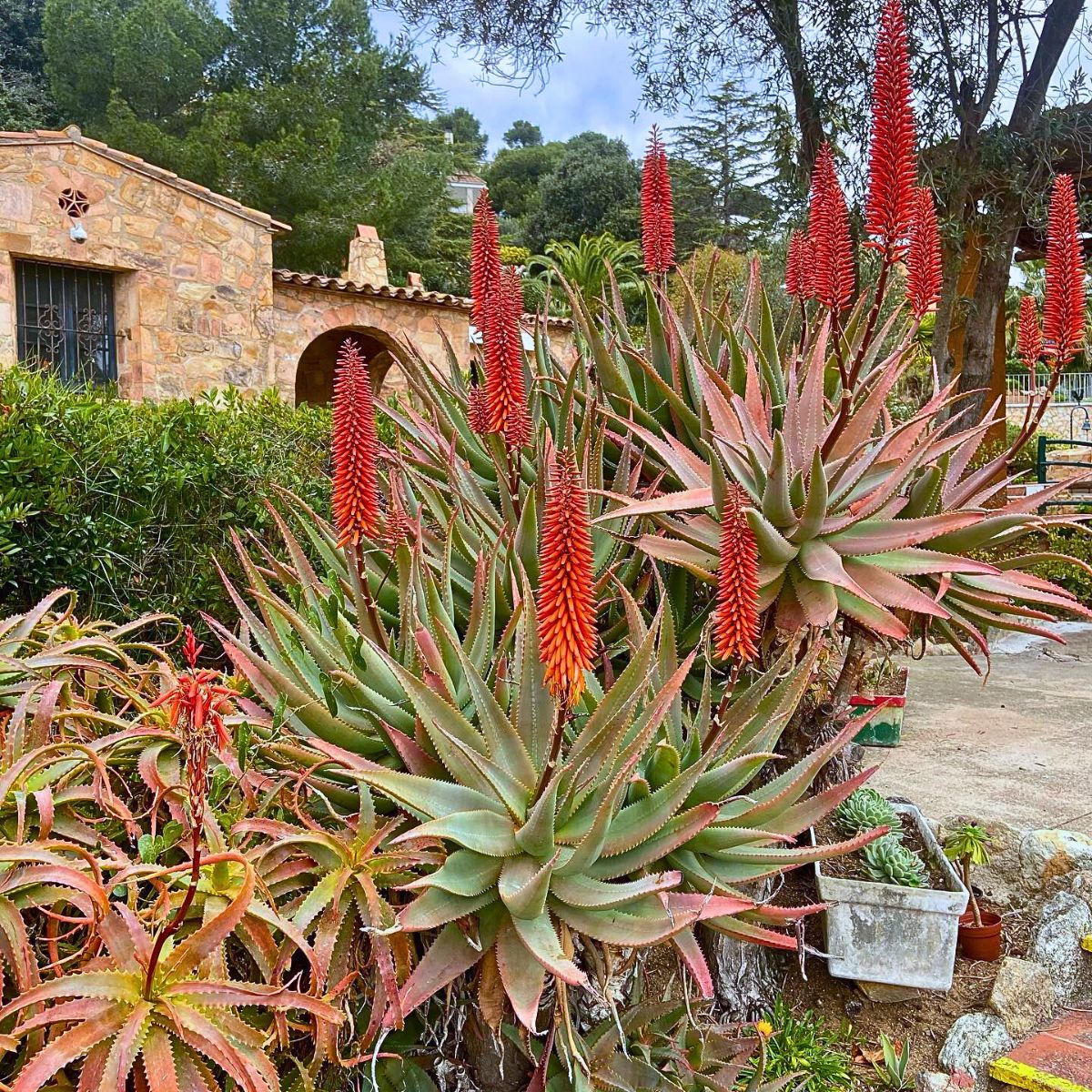
The Backyard
Transforming a backyard into a xeriscape, likewise, involves selecting drought-tolerant, native plants and incorporating design elements that minimize water usage. With the climate and soil conditions evaluated, you can also check the available sunlight to identify the best-adapted species.
You can, for instance, create a perfect courtyard and patio oasis using native grasses, succulents, and flowering perennials that are excellent xeriscape choices, as they thrive on limited water. Arrange the plants in groups with similar moisture needs to maximize efficiency, and incorporate mulch around the bases of the plants to retain soil moisture. You can also use permeable hardscaping like flagstone, gravel, or decomposed granite instead of water-repellent concrete. Ideal drought-tolerant plants like agave, yuccas, or desert willow are perfect for the patio.
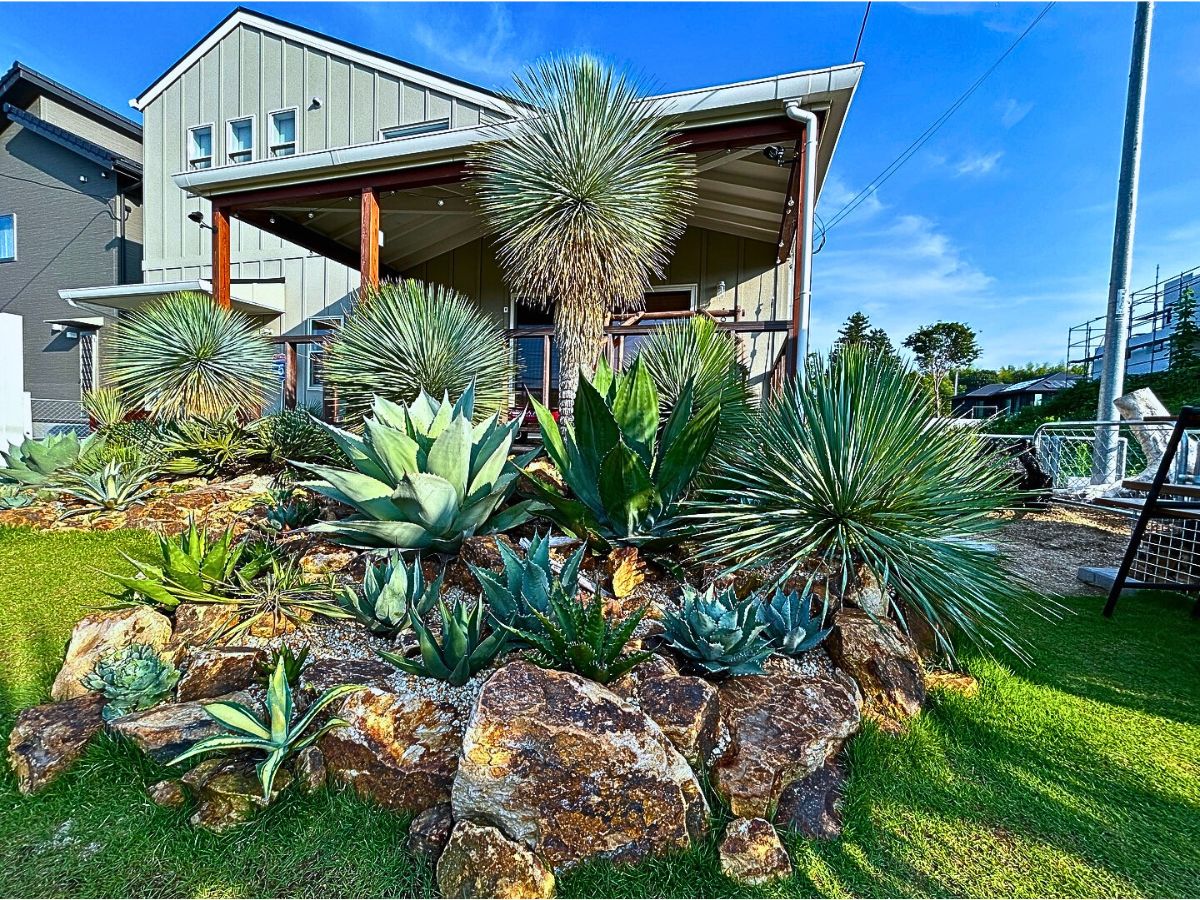
Add a vegetable garden into the mix; growing water-wise vegetables like tomatoes, peppers, and beans in raised beds or containers. Use drip irrigation for this purpose as it only releases minimal water for the plants.
Integrate visual interest with strategically placed boulders, dry creek beds, and pathways, and also consider incorporating shade trees native to your area to provide cooling. Try to avoid excessive lawn space, which requires regular watering, and instead, use low-growing groundcovers or other xeriscape-friendly shrubs. Then, incorporate a small water feature such as a fountain or a pond with a few aquatic animals to add visual interest and create that soothing ambiance.
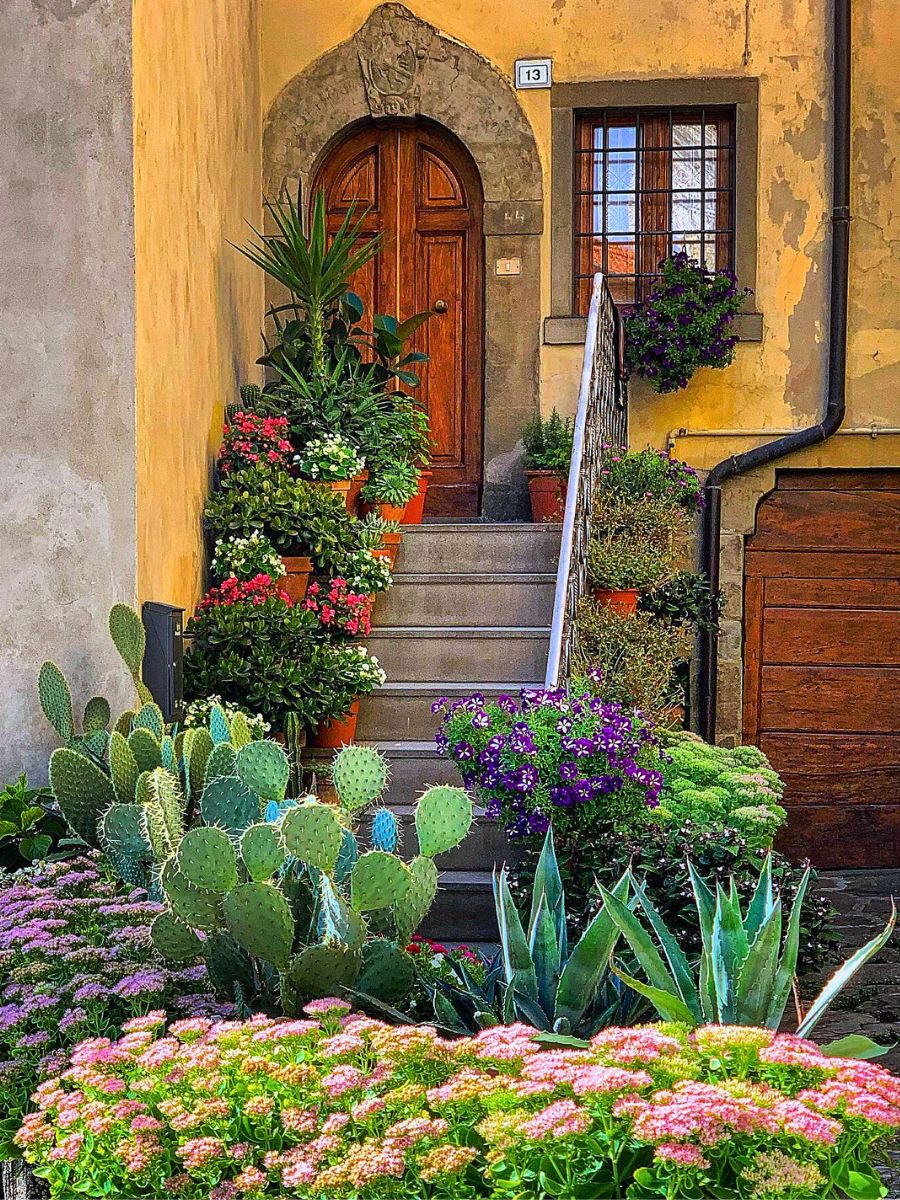
Ideal Xeriscaping Plants
Xeriscaping works well with a variety of garden and landscaping plants. The key is to select the plants native to the regional climate that are adapted to survive on minimal water. Grouping these plants with similar watering needs is also an important xeriscape design principle. Some of the ideal plants for this approach are succulents including agave, echeveria, sedum, Opuntia (prickly pear cactus), and yucca plants. These plants’ water-storing nature makes them perfect for xeriscaping.
Drought-tolerant and ornamental grasses like blue grama, buffalo grass, blue fescue, switchgrass, feather reed grass, fountain grass, purple fountain grass, and side oats grama are also effective as they provide texture and movement to the xeriscape. In addition, known for their drought resistance as well, cacti including chollas, and barrel cacti are also ideal.
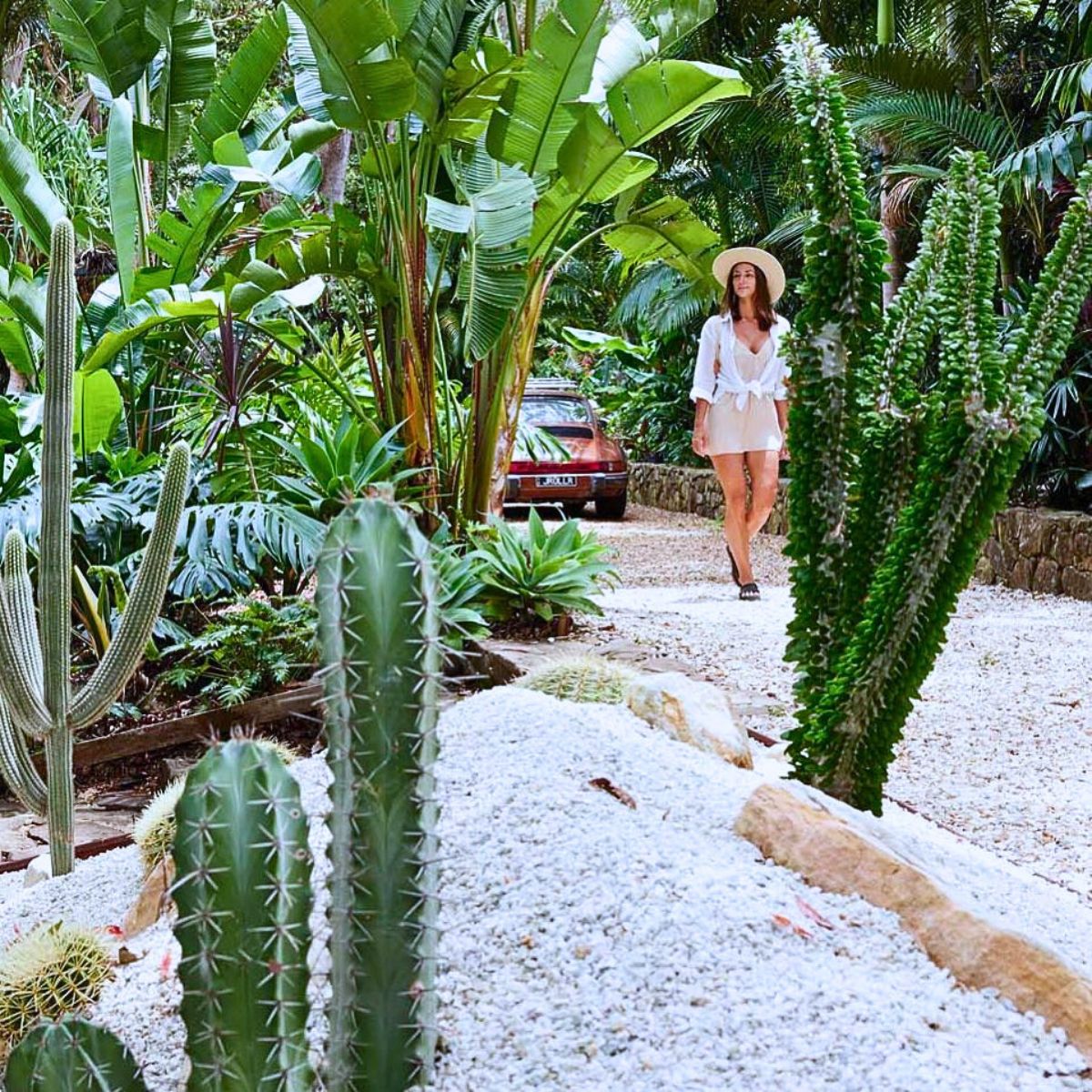
Photo by @thebackyardplantco
Hardy native shrubs, and flowering perennials, likewise, add structure and color to the xeriscape. They infuse a sense of aesthetic beauty, and some add aroma to the whole landscape. You can often smell the mix of these different scents and aromas, especially, in the evenings. Some of these shrubs include lavender, juniper, rosemary, barberry, salvia, beauty bush, boxwood, butterfly bush, purple coneflower, blanket flower, yarrow, cliffrose, fragrant sumac, ninebark, and tree hydrangeas, among others.
While trees may require more water than some other xeriscaping plants, carefully selected species like Pinyon pine (Pinus edulis), Honey mesquite (Prosopis glandulosa), desert willow (Chilopsis linearis), Chitalpa (x Chitalpa tashkentensis), Southwestern white pine (Pinus strobiformis), desert willow, New Mexico locust, or the Arizona Cypress can thrive in relatively dry conditions and provide shade, structure and additional beauty to the landscape.

Benefits of Xeriscaping Beyond the Garden
Xeriscaping is more than just a landscaping trend. It is an approach that incorporates several aspects as well, including sustainability. It significantly reduces water usage, saving money and contributing to water conservation efforts, while the native plants attract pollinators and beneficial insects, creating a thriving ecosystem in the garden thus promoting biodiversity.
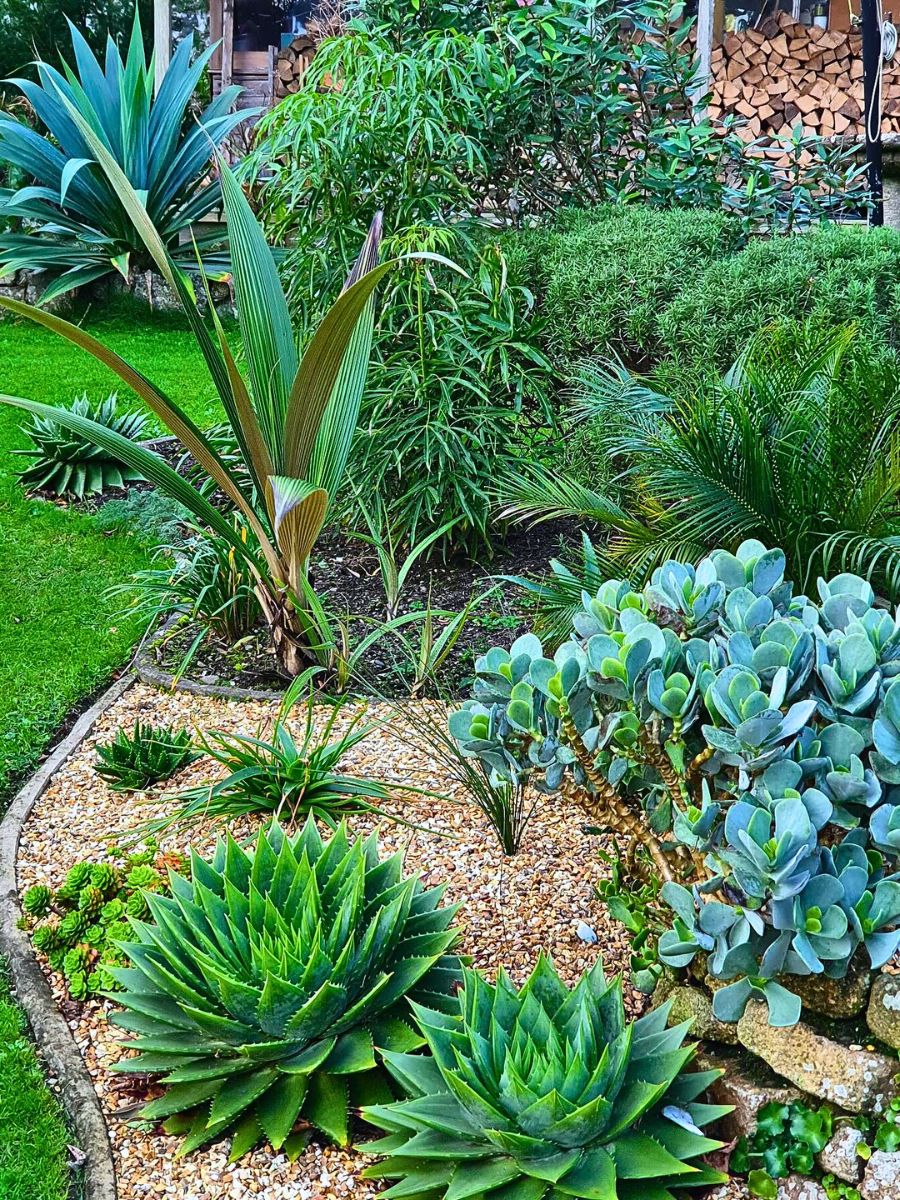
The drought-tolerant plants also require less watering and maintenance, freeing up one’s time and energy, while the approach, in general, enhances the home’s curb appeal through the stunning serene landscapes that are both beautiful and environmentally responsible.
Feature image by @mr_agave, header image by @desertinkdesign.


